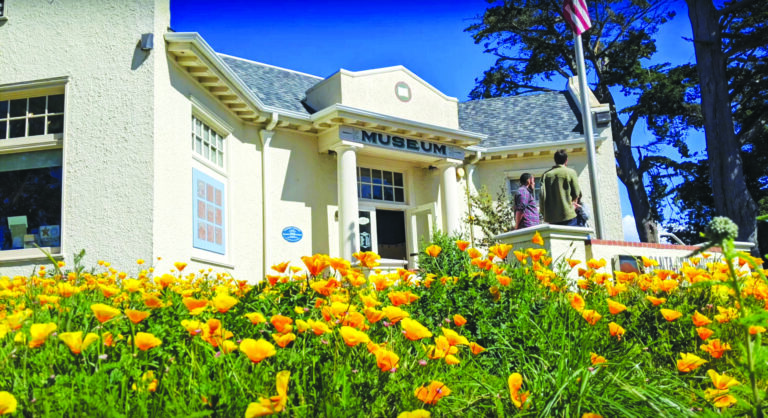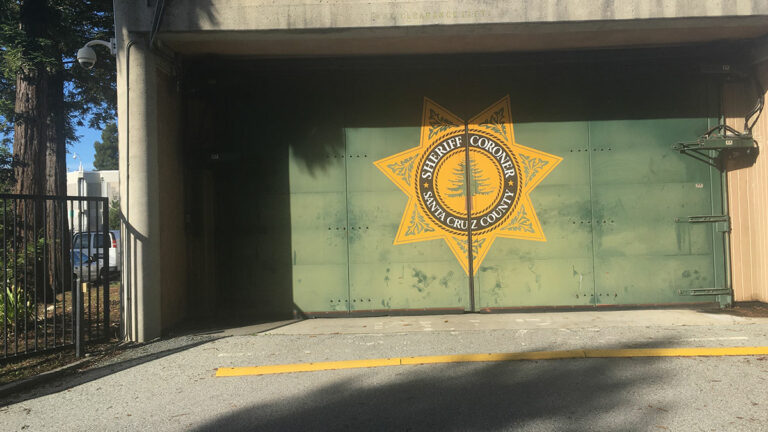After years of high hopes, false starts and obstacles of seemingly Biblical proportions (see: Covid-19 pandemic), the Greater Purpose Brewing Company (GPBC) officially opened its doors Tuesday, Dec 1.
Initially, the brewery—which is owned by the progressive Greater Purpose Community Church—planned to open in the old Logos bookstore building on Pacific Avenue, and it had been leasing that space. The original plan fell through, however, as GT reported in January. Greater Purpose Community Church pastor Christopher VanHall says plumbing issues would have hiked up the renovation costs to well above the group’s already expensive budget.
Instead, VanHall and company ended up purchasing East Cliff Brewing Company on East Cliff Drive in Live Oak and converting it into Greater Purpose Brewing. Although opening during a pandemic may seem like a heavy lift, VanHall says it honestly felt like divine intervention when it all worked out.
They aren’t the only ones taking the plunge in a year with so much uncertainty. Across Santa Clara, Monterey, Santa Cruz and San Mateo counties, 254 new applications for permits for a license to serve alcohol were submitted to the Alcohol Beverage Control agency this year. Though there is still more than a month left in the year, that number represents less than half of the 533 permit applications submitted for similar types of businesses in 2019. Still, restaurant owners are pushing forward and hoping for the best, despite, well, everything.
On the other hand, esteemed chef David Kinch has one piece of advice for aspiring restaurant entrepreneurs looking to launch their own ventures right now: “Don’t.”
“Just find the wherewithal and the resources to wait until this is all over,” says the Michelin-starred chef, who made his name with Los Gatos’ Manresa. “I’m a big believer that things can’t get back to normal until a vaccine, or until the pandemic is under control. Otherwise, we’re just going to be chipping away at something that will continue to gnaw at us and continue to hurt us, like it has for the past several months.”
Mentone, a casual Italian eatery serving specialty pizzas, pastas, wines and cocktails in Aptos, is his latest endeavor. Though it’s served food for months, it has never formally opened because it launched just as the county ordered indoor businesses to close.
Like his other restaurants, Mentone has been getting by in large part with takeout orders. But it hasn’t been easy.
“It’s really a terrible, terrible time right now,” says Kinch, who has worked in the Bay Area restaurant scene since 1988. “I just hope that the issues are dealt with and at some point in time we can return back to the way things used to be.”
POURED AND SAVIOR
But after all the waiting, VanHall is feeling optimistic and excited to be in business.
East Cliff Brewing’s previous owners, he says, wouldn’t sell unless Greater Purpose kept the original, English-style casket ale recipes, something GPBC happily agreed to. “They had an Irish red that was probably the best I’ve ever had,” he says.
Along with the old favorites, GPBC is brewing several of their own new ales, like the Inner Peace I.P.A. and Miss Molly Stout—the latter of which is brewed with coffee roasted by the local 11th Hour Coffee shop. The brewery will have permanent taps of two special brews, Velma’s Hat and Miss Pat, named after two late parishioners, Velma Walton and Pat Robertson. GPBC is currently working on several non-alcoholic drinks as well.
The location is only set up to allow the Greater Purpose pub to sell pints, not food—at least for the time being. The trouble is that health guidelines enacted due to the Covid-19 pandemic state that bars and brewpubs must sell food, so GPBC has teamed up with the aptly named Holy Smokes Country BBQ & Catering. VanHall says they will also invite food trucks to set up shop in the parking lot in the future.
GPBC’s mission is built around charity. Each customer will receive one token with a purchase, no matter how great or small, which they can then drop inside one of five local charity boxes (Planned Parenthood, the Diversity Center, the NAACP, Save Our Shores or the Homeless Garden Project). At the end of every month, each nonprofit will receive the portion of the brewery’s profits that represents the share of tokens they received.
After the pandemic is over, VanHall hopes GPBC will be able to donate more than 30% of profits to charities.
VanHall originally planned to have the Greater Purpose pub double as a worship center for the Greater Purpose church. But now he says he plans to keep the church’s congregation online-only, partly because many new members are from out of the area. Other longtime members have moved away but are still involved. Also, he doesn’t want anyone to get the sense that the pub is a Christian-only space.
“We don’t want anyone to second-guess this is a safe space for everyone to come, drink, engage in conversation and raise money for their community,” he says.
SILVER LININGS
Brenda Buenviaje agrees with Kinch that right now is a terrible time to try to open a restaurant.
But after 13 years of running Brenda’s French Soul Food in San Francisco and Oakland, she knew she had to do something. Business at her Polk Street location, near San Francisco’s Civic Center, dwindled because the tourists and workers that normally made up the bulk of her 500-plus daily orders stayed home. So she’s preparing to open her first South Bay outpost.
The good news is that she has had no shortage of workers to choose from.
“We are getting more applications than we had back a year ago, when there was a mass exodus of working class folks leaving the Bay Area because they couldn’t afford rent,” Buenviaje says. “So we’re not dealing with zero resumes anymore, it’s more just kind of figuring out what the best fit is for us.”
Buenviaje, who grew up in New Orleans, thinks San Jose will be a good place to land. Unlike many other parts of the Greater Bay Area, it has more homes, which means more customers.
There is certainly a shared experience that only new restaurateurs would understand.
Reza Manion, who just opened Bloom Eatery in Santa Clara, takes comfort in knowing that he isn’t the only one trying to open up the restaurant right now. It’s a distraction from his concerns about the potential for a slowdown in the coming rainy season and about the possibility of new pandemic-related economic restrictions.
“It makes me feel better that there’s other people that are crazy enough to launch a restaurant other than myself in a pandemic,” he says with a laugh.
Regardless of how restaurant owners are opening their doors in the near term, they know the time to develop a customer base is now. Otherwise, when the virus eventually recedes, residents will emerge from their homes only to find that there is little left of the places that help breathe life into communities.
“Independent restaurants are in dire, dire shape. We’re not getting any kind of help from the government in any kind of way—we’re kind of being left on our own to deal with this,” Kinch says. “I think large swaths of the American public are starting to realize how important independent restaurants are to the social fabric of the culture of our country. It’s going to be a real shame if a lot of them leave, or are gutted—and unfortunately, that’s what we’re seeing happen right now.”
























